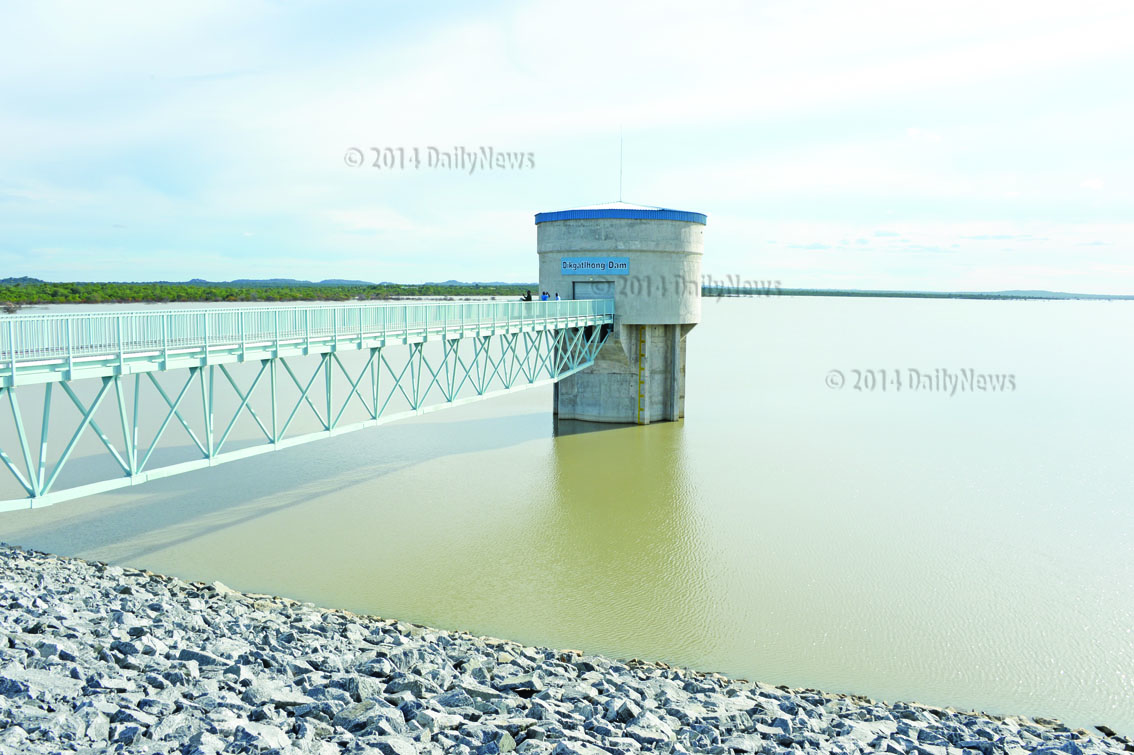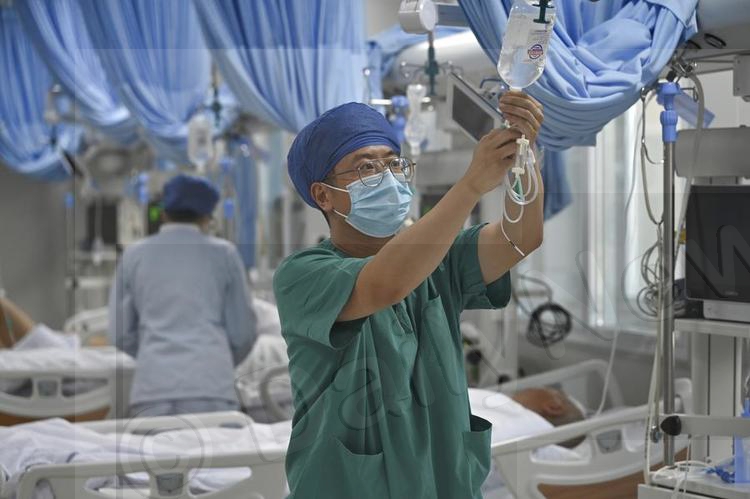More villages to benefit from Dikgatlhong
25 Apr 2014
The study carried out between 1989 and 1992, came about after realisation that the country was headed for critical water supply situation.
It advised government to construct more dams in the northern part of the country, which receives more amounts of rainfall per annum for collection of surface water, which could then be channeled to thirsty parts of the country to meet domestic and industrial demands.
One of the dams recommended for construction was Dikgatlhong Dam at the confluence of Shashe and Tati rivers, which was envisaged to start filling by the 2004/05 wet season.
There were delays in take-off of the project but after relocation of some people from Polometsi and Matopi settlements to Robelela to make way for the dam, construction finally commenced in 2008 with government pumping P1.3 million on the giant 400 million cubic-metre structure.
Lying in the thick forest between the copper mining town of Selebi Phikwe and the city of Francistown, the dam holds a large body of water.
And the nearby small village of Robelela would easily disappear into the dam without trace; such is the massiveness of Dikgatlhong Dam.
Vice President, Dr Ponatshego Kedikilwe, who was then Minister of Minerals, Energy and Water Resources, performed ground breaking of the project in March 2008, as the community living in the precinct of the dam site gave its approval.
In a recent interview with Daily News, Dr Kedikilwe, who is also Mmadinare Member of Parliament, said the dam possessed potential to serve as a tourist attraction.
Chinese construction company, Sinohydro, was awarded the project and took four years to complete construction of the dam, which is easily the largest in the country with a 4.6km wall.
Meanwhile, as the country grappled with problems of water shortage, government remained confident that completion of Dikgatlhong Dam would result in sufficient water supply.
“The dam itself is one-hundred percent full, but we are currently in the process of constructing a pipeline that will carry water from the dam to the southern part of the country,” reckons Mr Thatayaone Dedede, acting permanent secretary in the Ministry of
Minerals, Energy and Water Resources, which supervised construction of the project.
Mr Dedede explains that once components of the North South Carrier Two, which will carry water from Dikgatlhong Dam to the south of the country, are complete many villages in the south will enjoy water supply from the dam.
“Dikgatlhong came as a result of the need to connect more villages to the North South Carrier,” he says.
Such areas, he explains, include Palapye, Serowe, Mahalapye, Mochudi, villages in the Kgatleng District, Shoshong, Kalamare, Gaborone, Ramotswa, Lobatse, Molapowabojang and Kgomokasitwa.
The pipeline, which is currently under construction, will be completed by the end of next month, according to Mr Dedede.
“It starts from the dam itself to Palapye and we are doing it in two sections. The first section of 75 kilometres from Dikgatlhong to a place called Moralane, including construction of the pump station near the dam, will cost us P1.4 billion,” says Mr Dedede.
He adds that the second section, from the break pressure point at Moralane to Palapye, entails a 75km long pipeline as well and its construction, to the tune of P1.5 billion, is also ongoing.
Mr Dedede points out that the NSC Two, which was constructed on the same corridor as the North South Carrier One which carries water from Letsibogo Dam, is being constructed using 1.2 diametre steel pipes manufactured at a factory in Palapye.
“Construction of the first 75 kilometres of the pipeline from the dam to Moralane has already been completed but what is behind is completion of the pump station. We are expecting everything to be completed by end of May and we should then be able to start drawing water from the dam. We will be able to draw 45 million cubic metres of water from Dikgatlhong to the south of the country,” notes Mr Dedede.
The acting deputy PS further says his ministry is planning to construct another pipeline in future which will carry water to areas such as Moshupa, Kanye and Thamaga to ease them from shortage of water.
The pipeline will be connected from Mmamashia, he adds. Also, he revealed future plans to connect villages in the Good Hope Sub-district to the network of areas receiving water from the NSC Two. Mr Dedede says they are considering adding villages in the Tswapong south to areas benefitting from the NSC Two during the National Development Plan (NDP) 11.
He also says they are planning to construct the second pump station near Tropic of Capricorn next year as they look to double the amount of water to be channeled through the NSC Two.
“After all these we would have been able to close the water deficit up to the year 2035. But our projections were based on developments around the areas covered by the water pipeline,” says Mr Dedede.
When everything has been said and done, the huge body of water that is Dikgatlhong Dam will quench the nation thirst. ENDS
Source : BOPA
Author : BOPA
Location : GABORONE
Event : Development feature
Date : 25 Apr 2014







